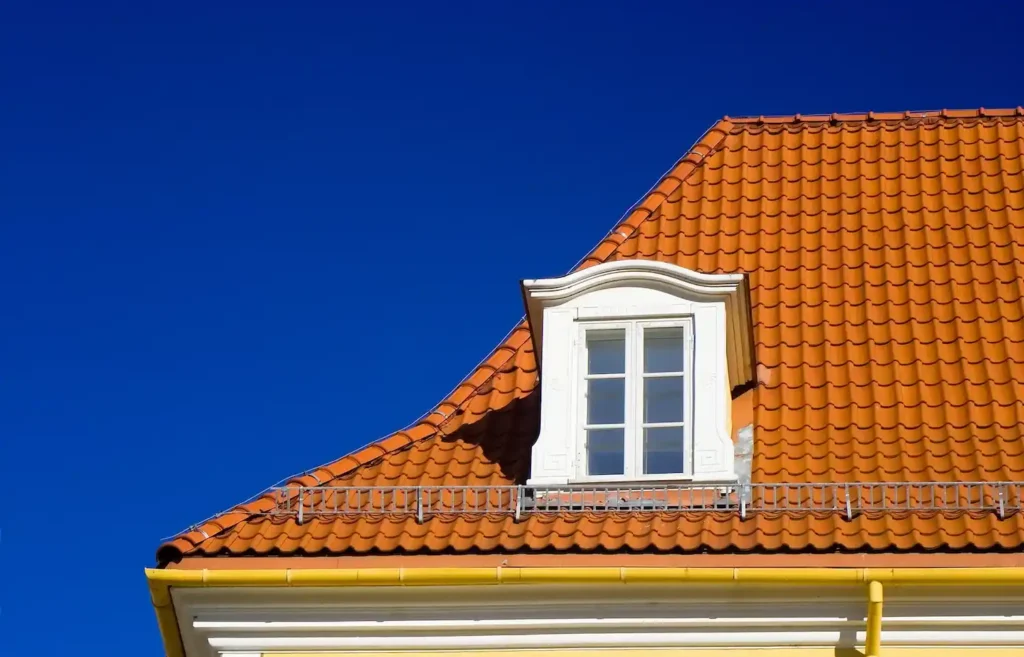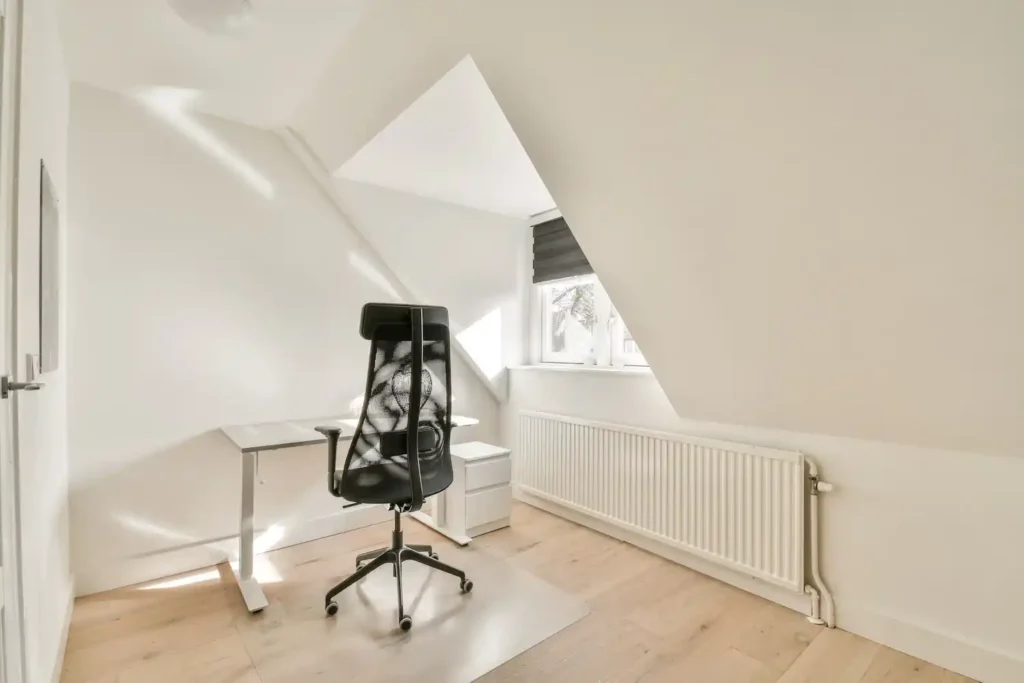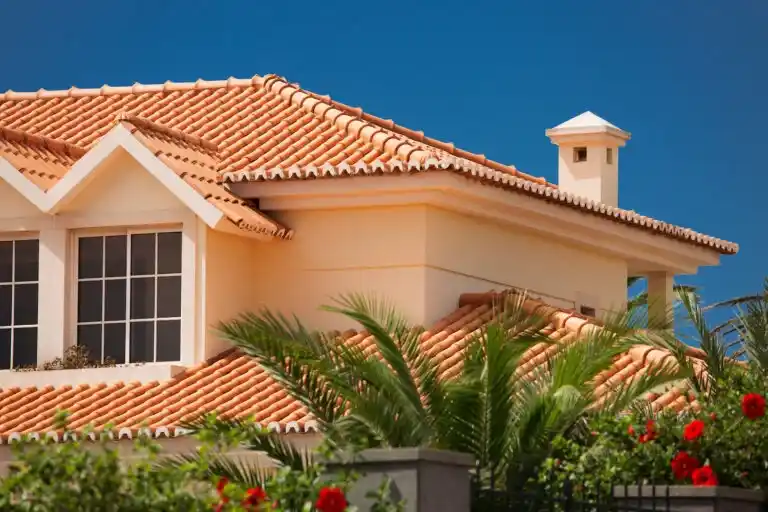A Mansard roof is a roof with very distinct characteristics, such as slopes on each side. These types of roofs have what you would call an “old-world” quality to them, and they have remained relatively popular throughout time. Some reasons why a mansard roof is a great choice include:
- The beautiful aesthetic
- The added attic space
- The opportunity to add on
In this article, we’re going to take a closer look at mansard roofs and what advantages (and disadvantages) they come with.
THE DEFINITION OF A MANSARD ROOF

A mansard roof— also known as the French roof or curb roof — is generally defined by its four sloping sides. It’s often confused with two-sided gable roofs, gambrel roofs, and hip roofs (which are primarily associated with barn houses). However, they aren’t the same thing.
One of the primary characteristics of a mansard roof structure is that it’s hipped, meaning that it has four sections that tilt downward toward the walls of the house and are all roughly the same shape. The two opposite sides of a mansard roof also have a significantly steeper slope than their adjoining faces.
Their overall shape provides a vertical expansion that offers top-level room space, minus the pointy top. They also typically feature dormer windows, which allow more light into the space, making for a more liveable upper floor.
A BRIEF HISTORY OF THE MANSARD ROOF
The mansard roof style has an architectural history that can be traced back to the type of buildings that existed throughout England and Italy during the 16th century. Of course, the Louvre, which was built in 1793, is historically noted for the roof’s “first appearance” crediting French architecture for its beginnings.
The style of the Louvre’s roof was eventually named after the French Baroque architect, Fraçois Mansart, who topped the Parisian countryside chateaus and hotels throughout the city with the roof. The mansard’s shape later became popular in Victorian architecture, which traveled to the United States in the mid-19th century.
The Victorian-style homes in the US during this time were referred to as “Second Empire homes,” as they emulated the revival of mansard roofs during the reign of Napoleon III in France — which was known as France’s Second Empire. This Second Empire design was added to major public buildings throughout America, specifically the Charity Hospital in New York City and the Corcoran Gallery of Art in Washington, D.C.
Both of these architectural works were completed by James Renwick and served as the roofing style inspiration for most civic buildings.
THE ADVANTAGES OF A MANSARD ROOF 👍

The advantages of the mansard roof include the following:
✅ Extra attic space. As mentioned earlier, mansard roofs have a more pronounced vertical slope, which provides more attic space. Combined with dormer windows and the length of the roof’s bottom slope, it easily enables the attic to become a lofty master bedroom if desired.
✅ Expandability. Despite the roof’s vertical nature, it has a mostly flat top — which offers homeowners flexibility should they decide to build an additional floor on top. This makes the mansard roof an excellent choice for homeowners looking to expand their homes in the future.
✅ Aesthetic value. Looks may be subjective, but this roofing style was an integral part of the French Renaissance period for a good reason. When constructed properly, it adds a certain level of elegance and sophistication, which in turn adds to the aesthetic value — especially since they can be tiled or shingled.
THE DISADVANTAGES OF A MANSARD ROOF 👎
Despite being sophisticated and practical for future planning, the mansard roof also comes with a few disadvantages:
❌ They’re not very weather-resistant. Due to having a flatter slope, the mansard style is more susceptible to leaks during heavy rainfall or snowfall. If not maintained properly, the entire roof could end up collapsing during a bad storm.
❌ High installation costs. These roofs have a pretty complex design, which naturally leads to higher installation costs. Additionally, thanks to the dormer windows along steeply raked bottom slopes, maintenance costs and repair costs tend to be higher compared to your standard roof.
❌ Contractor issues. Due to the complexity of their overall design and difficulty with upkeep, it can be difficult to find a roofing expert that’s familiar with installing, maintaining, and repairing mansard roofs.
WHAT TYPE OF ROOF IS RIGHT FOR YOU?
Given the right neighborhood and structure of your home, a mansard roof can give it an elegant touch that elevates its entire aesthetic. Of course, mansard roofs aren’t suitable for everyone.
If you’re in need of a new roof, let our experienced and licensed contractors help you choose what will work best for your home, budget, and other needs. Schedule your free inspection today, and we’ll handle the rest!



